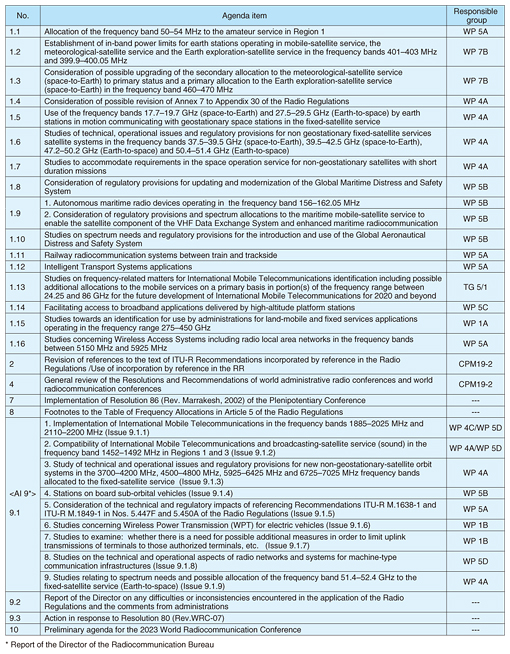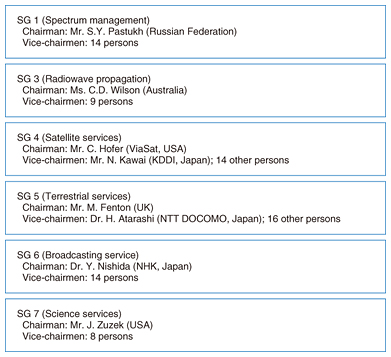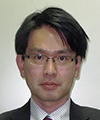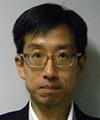 |
|||||||||||
|
|
|||||||||||
|
Global Standardization Activities Vol. 14, No. 6, pp. 48–55, June 2016. https://doi.org/10.53829/ntr201606gls Report on ITU World Radiocommunication Conference 2015AbstractThe International Telecommunication Union (ITU) World Radiocommunication Conference 2015 (WRC-15) was held in Geneva, Switzerland in November 2015. This conference is normally held every three or four years to discuss updating the Radio Regulations (RR), a formal document issued by the ITU. The RR is enforced on the ratifying member states as international regulations regarding radiocommunication in the ITU Constitution and Convention. The RR is updated after each WRC, and national regulations such as the Radio Law in Japan are enacted accordingly. This article reports on the results of WRC-15. Keywords: WRC-15, World Radiocommunication Conference, RA-15 1. IntroductionThe World Radiocommunication Conference (WRC) is the largest international conference in the International Telecommunication Union - Radiocommunication Sector (ITU-R)*1 to discuss updating the Radio Regulations (RR) and is normally held every three or four years. The RR provides international rules and regulations for allocation of the spectrum to radio services, use of satellite orbits, and administrative and operational procedures for radio stations. The RR must be updated based on the results of the WRC in order to allocate the spectrum to new services. The last WRC, WRC-15, was held November 2–27 in Geneva, Switzerland (Fig. 1). Approximately 3800 participants from 162 member states attended WRC-15, including 82 delegates from Japan [1].
In the RR, the world is divided into three regions, as shown in Fig. 2, and frequencies are allocated to services in each region. As shown in the figure, there are four regional telecommunication organizations in Region 1, and one organization each in Regions 2 and 3. Japan is a member of the Asia-Pacific Telecommunity (APT)*2 in Region 3. Reaching consensus in the APT is very important in order to carry out Japan’s policy on usage of the spectrum.
The structure of WRC-15 is shown in Fig. 3. The chairman of the Plenary, which coordinates all conference activities, is Mr. Daudu. He is the first WRC chairman from Africa. Under the Plenary, there are seven committees (COMs 1–7), as shown in Fig. 3. COM 4, COM 5, and COM 6 respectively discussed terrestrial/aeronautical/maritime matters, satellite matters, and general issues/new agenda items. At WRC-15, 36 agenda items listed in Table 1 were discussed, and an output document called the Final Acts was produced [2]. The agenda item on Global Flight Tracking (flight tracking system by satellite) was newly established in response to an aviation accident, and the discussion on this item resulted in a resolution to allocate the same frequency band (1090 MHz) as terrestrial flight tracking systems.
1.1 Identification of additional frequency bands for International Mobile TelecommunicationsIn response to strong demand for International Mobile Telecommunications (IMT), the identification of additional frequency bands for IMT was discussed, after which it was resolved to identify the new frequency band of 1.5 GHz (1427–1518 MHz) as a global IMT band, which is already used in Japan. 1.2 Additional allocation to satellite servicesAdditional allocation to satellite services such as the fixed satellite service (FSS) and the mobile satellite service (MSS) was also discussed at WRC-15. Under agenda item 1.6.2, “Possible primary allocations to the FSS (Earth-to-space) of 250 MHz in Region 2 and 300 MHz in Region 3 within the range 13–17 GHz,” additional allocation in the frequency band of 14.5–14.8 GHz was resolved with some conditions, for example, to prohibit the deployment of earth stations within a distance of 500 km from neighboring countries. Regarding agenda item 1.10, “To consider spectrum requirements and possible additional allocations for the MSS within the frequency range from 22 GHz to 26 GHz,” although the RCC (Regional Commonwealth in the field of Communications; Russian Federation) was strongly in favor of additional allocations, no allocations were agreed to after a long discussion. As for agenda item 1.9.2, “The possibility of allocating the bands 7375–7750 MHz and 8025–8400 MHz to the maritime MSS (MMSS),” it was resolved to allocate the frequency band of 7375–7750 MHz to the MMSS with the condition that stations in the MMSS shall not claim protection from interference from radio stations in the terrestrial services. The results of these agenda items will therefore have no harmful influence on stations in the terrestrial services in Japan. 1.3 Review of provisions related to earth stations on board vesselsAt WRC-03 held in 2003, it was decided to allow earth stations on board vessels (ESV) to use certain frequency bands allocated to the FSS. In this case, to prevent harmful interference to stations in the terrestrial services, Resolution 902 (WRC-03) was agreed to, which prohibits the use of ESV within a certain distance from coastal lines. The required distances are 125 km for the Ku band (14–14.5 GHz) and 300 km for the C band (5925–6425 MHz). In agenda item 1.8 at WRC-15, the possible revision of these distances was discussed. As a result, it was resolved that no revision to Resolution 902 (WRC-03) would be made, and footnote No. 5.457A in the RR was revised so that the use of ESV is allowed with a separation distance of 330 km from coastal lines with a minimum antenna diameter of 1.2 m for the C band. These results do not affect existing ESV services using the Ku band. 1.4 Agenda items for WRC-19Thirty-three agenda items for the next WRC (WRC-19), to be held in 2019, are listed in Table 2. The group responsible for each agenda item at WRC-19 was decided at the first session of the Conference Preparatory Meeting (CPM19-1), which was held immediately after the close of WRC-15. Studies on these agenda items are carried out in ITU-R Study Groups for the study period of 2016–2019 (Fig. 4). Japan proposed four agenda items for WRC-19, and all were approved. The proposed agenda items are as follows: • Global or regional harmonized frequency bands for evolving Intelligent Transport Systems (Agenda item 1.12); • Identification of frequency bands for the future development of IMT (5G) in the frequency range 24.25–86 GHz (Agenda item 1.13); • Identification of frequency bands for applications in the land mobile and fixed services operating in the frequency range 275–450 GHz (Agenda item 1.15); • Studies concerning Wireless Power Transmission for electric vehicles (Agenda item 9.1 Issue 9.1.6).
Some other agenda items for WRC-19 adopted in WRC-15 are as follows: • Global or regional harmonized frequency bands for railway radiocommunication systems between train and trackside (Agenda item 1.11); • High-altitude platform stations (Agenda item 1.14); • Issues related to wireless local area networks in the frequency bands 5150–5925 MHz (Agenda item 1.16). The discussion on item 1.16 is based on contributions from the Inter-American Telecommunication Commission and multiple European countries. As a result, it was decided that the frequency bands of 5150–5470 MHz and 5725–5925 MHz will be considered. In addition, agenda items of WRC-23, which will be held after WRC-19, were also discussed, and it was decided that a review of the leap second (WRC-15 agenda item 1.14) will be discussed at WRC-23 toward abolishing leap seconds.
2. ITU Radiocommunication Assembly 2015 (RA-15)Preceding WRC-15, ITU Radiocommunication Assembly 2015 (RA-15) was held from 26–30 October 2015 at the same venue as that of WRC-15. RAs are convened to set the overall direction such as to decide study items for the next study period, and they are usually associated in time and place with the WRCs. Approximately 460 participants from 107 member states attended RA-15, including 30 delegates from Japan [3]. Dr. Hashimoto (NTT DOCOMO) was appointed chairman of the Plenary. RA-15 approved 7 Recommendations, 33 Resolutions, and 200 Questions proposed from ITU-R Study Groups and members. RA-15 approved a Resolution to name the 5G mobile systems “IMT-2020.” It was also resolved at RA-15 to conduct studies on the Internet of Things in ITU-R, as well as in ITU-T SG 20. Additionally, RA-15 appointed the chairmen and vice-chairmen of the Study Groups. From Japan, Dr. Nishida of NHK was appointed chairman of SG 6, and Mr. Kawai of KDDI and Dr. Atarashi of NTT DOCOMO were appointed vice-chairmen of SG 4 and SG 5, respectively. 3. Future activitiesThe NTT Group will continue to participate and contribute to ITU-R and the relevant meetings towards WRC-19 in Japan and the Asia-Pacific region such as APT Conference Preparatory Group (APG) in order to promote the ongoing development and improvement of telecommunication services and guidelines throughout the world. References
Column—Languages used in international meetings—The ITU is a specialized agency of the United Nations (UN) for information and communication technologies. The official languages of ITU are Arabic, Chinese, English, French, Russian, and Spanish in accordance with Article 29 of the Constitution of the ITU as well as the official languages of the UN. The Constitution also states that the original documents are to be written in French, and the seating order at meetings is based on the alphabetical order of the French names of the member states. At the Plenary, simultaneous interpreters of six languages are available, and texts in six languages are provided. Participants can download documents in their preferred language and attend conferences using their preferred language voice channels. |
|||||||||||


















